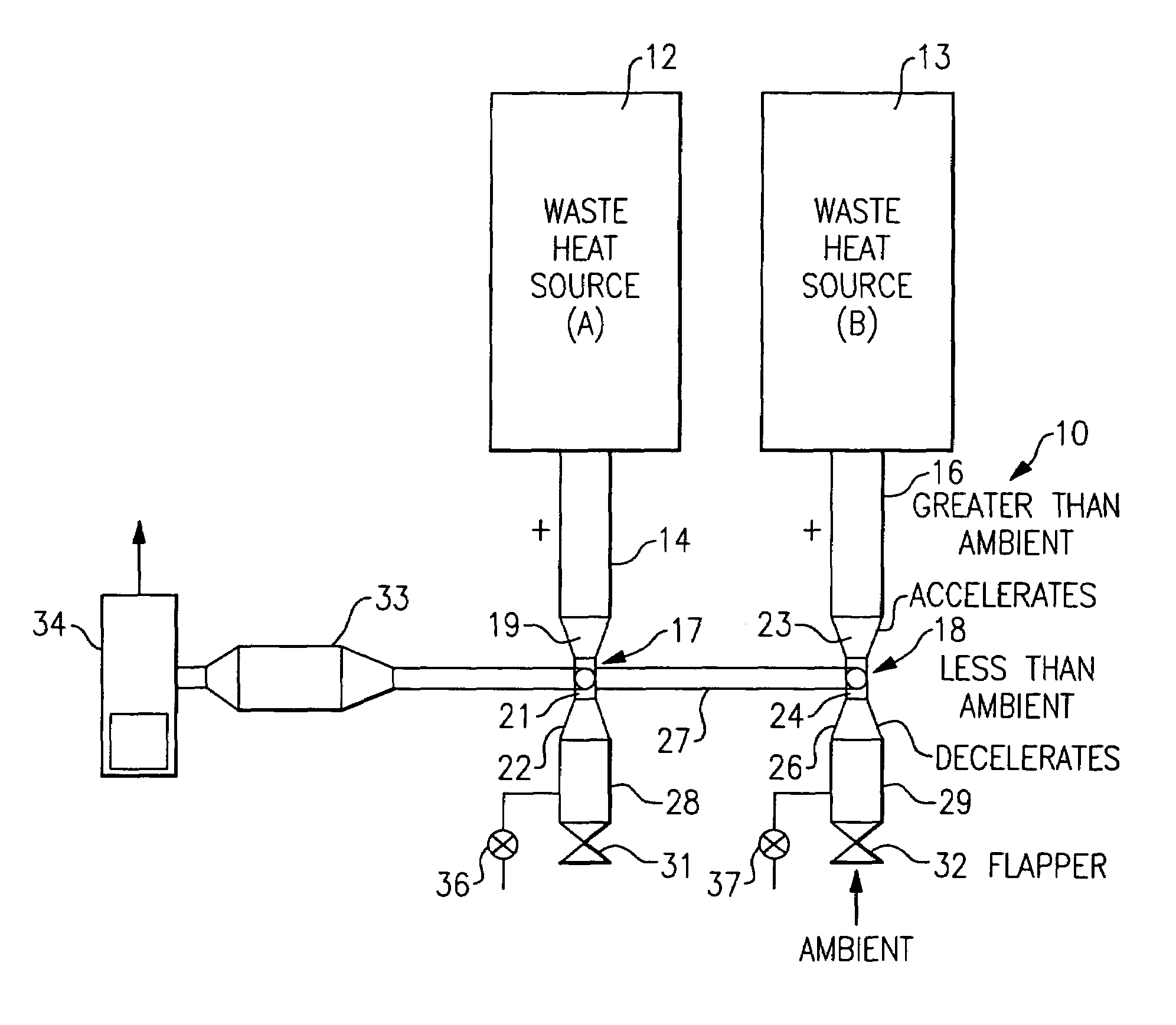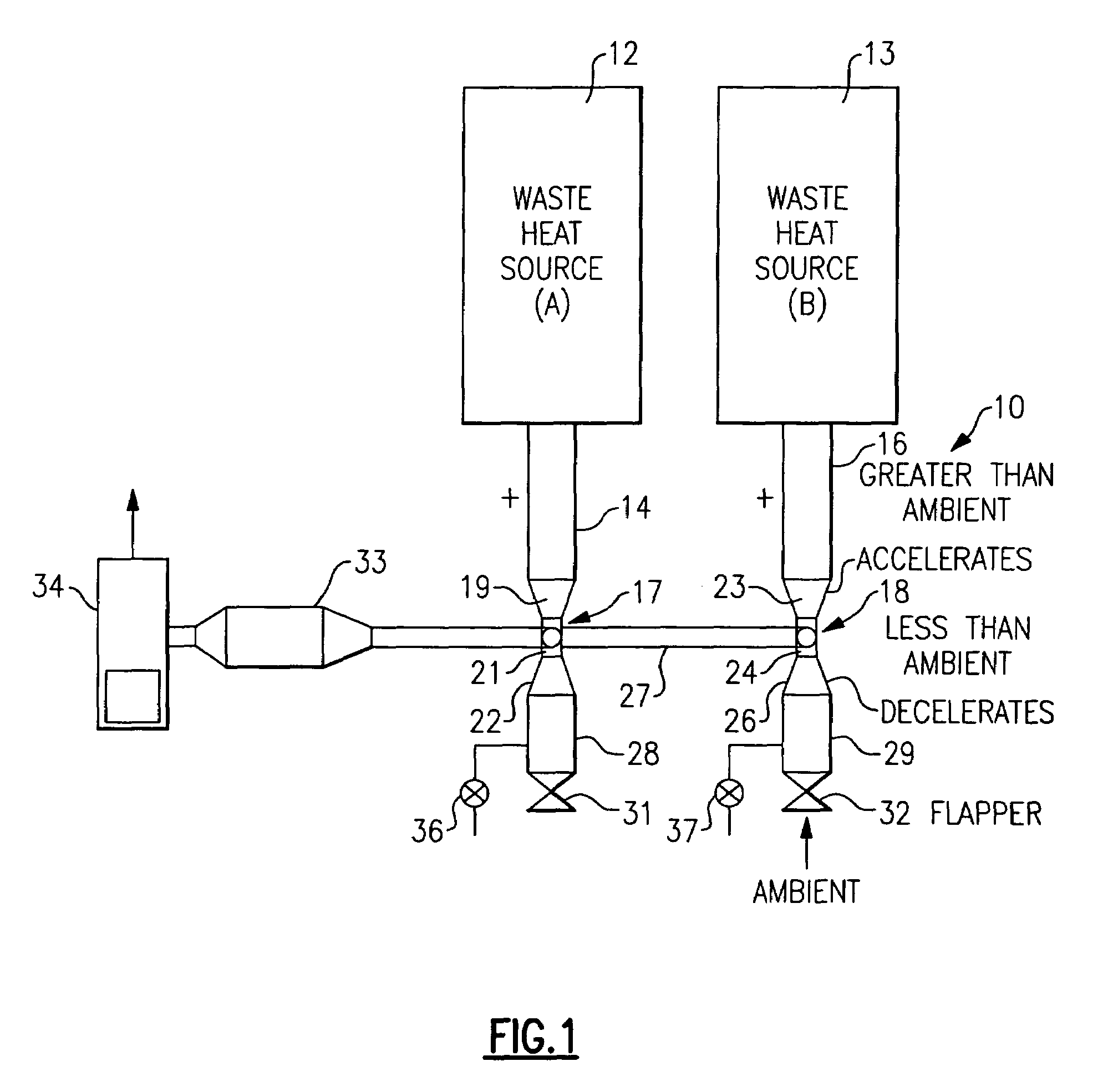Apparatus for extracting exhaust heat from waste heat sources while preventing backflow and corrosion
a technology of exhaust heat and exhaust fan, which is applied in the direction of corrosion-reducing boiler components, machines/engines, energy industry, etc., can solve the problems of backflow of exhaust into the cold, corrosion at the acid dewpoint, and non-operational engines
- Summary
- Abstract
- Description
- Claims
- Application Information
AI Technical Summary
Benefits of technology
Problems solved by technology
Method used
Image
Examples
Embodiment Construction
[0009]Referring now to FIG. 1, the invention is shown generally at 10 as applied to a heat recovery system for recovering waste heat from a plurality of waste heat sources as shown at 12 and 13. Although the invention will be described in terms of use with two waste heat sources, 12 and 13, it should be understood that the present invention is applicable to any number of such systems operating in parallel or to use with a single waste heat source.
[0010]One of the features of the present invention is to allow one or more of the waste heat sources to be in a nonoperating condition, or in a condition of operating at a lower speed, while one or more of the other waste heat sources in an operable condition at higher speeds. Normally, in these conditions, there is tendency for the hot gases from the operating waste heat source(s) to migrate to the nonoperating waste source(s), where it may condense and cause acid dewpoint corrosion (ADC). The present invention is intended to overcome this...
PUM
| Property | Measurement | Unit |
|---|---|---|
| temperatures | aaaaa | aaaaa |
| temperatures | aaaaa | aaaaa |
| pressure | aaaaa | aaaaa |
Abstract
Description
Claims
Application Information
 Login to View More
Login to View More - R&D
- Intellectual Property
- Life Sciences
- Materials
- Tech Scout
- Unparalleled Data Quality
- Higher Quality Content
- 60% Fewer Hallucinations
Browse by: Latest US Patents, China's latest patents, Technical Efficacy Thesaurus, Application Domain, Technology Topic, Popular Technical Reports.
© 2025 PatSnap. All rights reserved.Legal|Privacy policy|Modern Slavery Act Transparency Statement|Sitemap|About US| Contact US: help@patsnap.com


